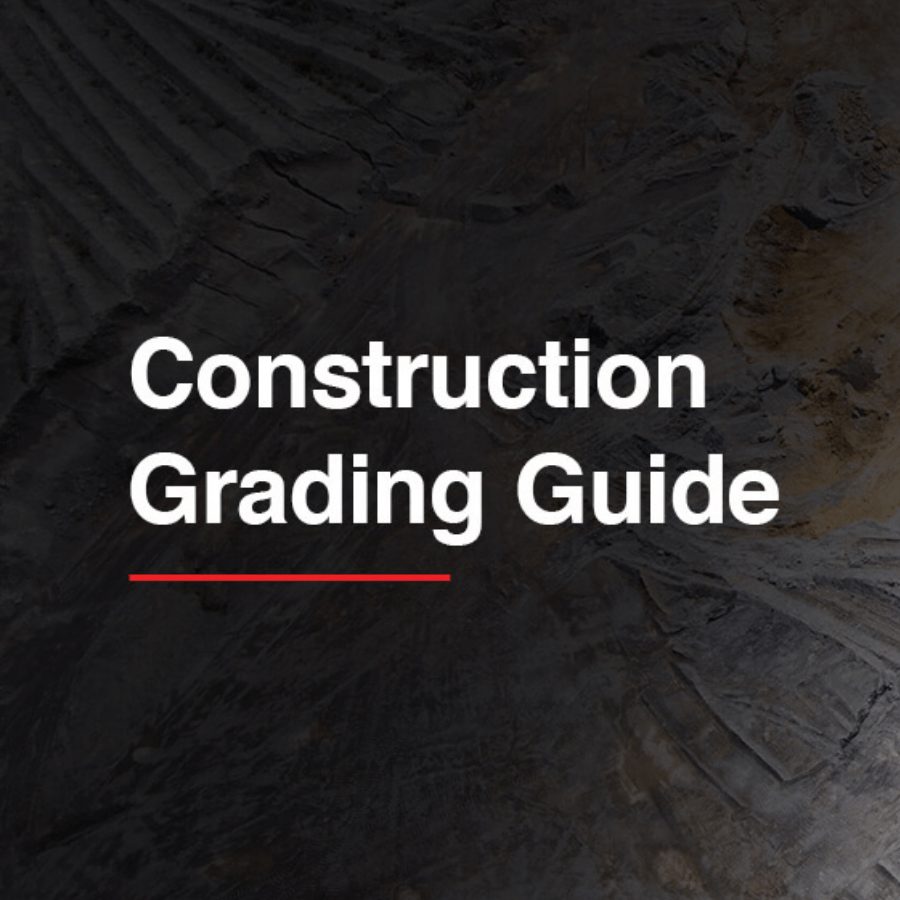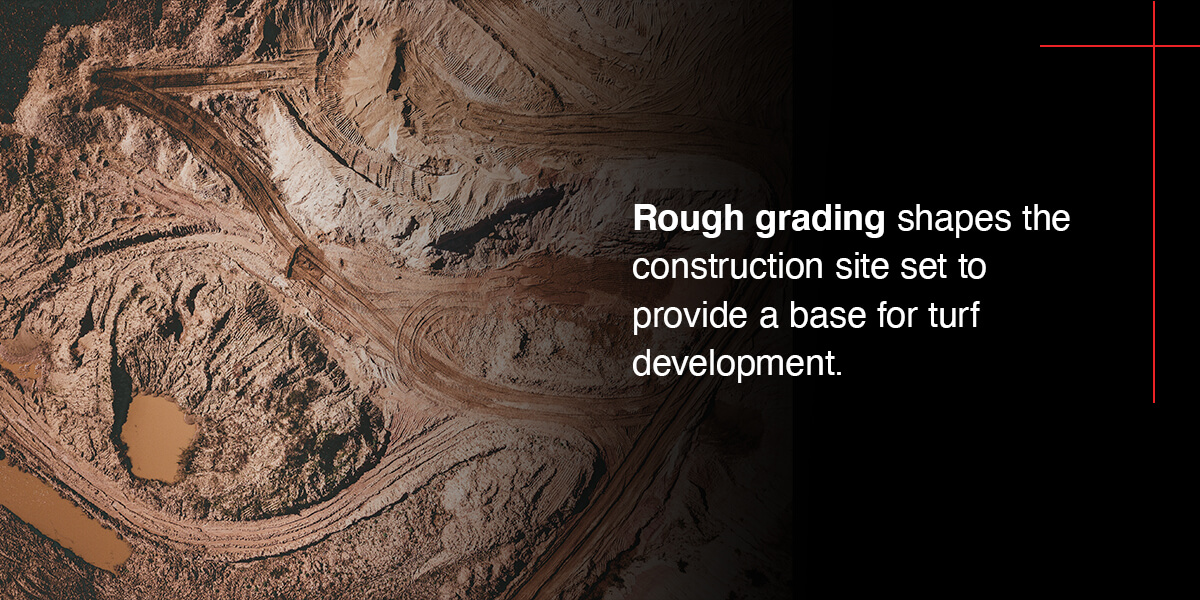Construction Grading Guide

11/23/2021
Your Construction Grading Guide
Land grading is essential to optimize success at a construction site. Since so many techniques exist, it’s crucial to understand site grading basics. Our construction grading guide will help you evaluate the best steps to take at your construction site.
Grading in construction requires significant planning to avoid potential setbacks and ensure an optimal finished product.
What Is Grading in Construction?
Construction grading prepares a site for building, while site grading sculpts the land to fit the project’s needs. Site grading’s primary goal is to avoid damaging the machines used on the site or the structure that will take shape there.
Construction grading provides a blueprint for attaining the property’s desired aesthetics. The plan must comply with the municipality’s regulatory restrictions and requirements, and construction grading ensures there will be no issues during the project’s execution. This planning establishes the allowable machinery workers can use on the site without damaging the area, which could prevent advancement from the initial stages.
Water drainage and environmental issues are the primary focus of construction grading. Pooling water can damage the structure or prevent growth in an area. Environmental considerations — like planning for water runoff, preventing potential pollutants and avoiding erosion — are vital to the construction site’s success.
Construction Grading Types and Purposes
Depending on a construction site’s needs, the project’s optimal execution may require different types of site grading. Here are six types of construction grading basics that may occur on a site.
1. Landscape Grading
Landscape grading helps prepare a site for a landscaping project by removing topsoil, smoothing areas for planting and making the area more aesthetically appealing. Typically, landscape graders also install or create an irrigation system. By reshaping the land to create or remove elevations, you can facilitate water drainage to a specific area.
Water drainage is vital in landscape projects because pooling can damage plant life. Poor water drainage may also prevent some plants from getting the water they need to survive, and dying landscapes are much less aesthetically appealing.
2. Architectural Grading
Architectural grading changes the shape of the land for a new building project, whether it be a new home, housing development or commercial property. This process removes elevations that may permit water to drain in areas that could damage the future structure.
3. Regrading
Regrading is the process of lowering or raising the project area. Whether it’s a large development or a small project, regrading allows the structure to sit on a level area that allows for sufficient water drainage and ensures the building is on secure ground.
4. Rough Grading
Rough grading shapes the construction site set to provide a base for turf development. Setting a slope and leveling an area both fall under rough grading, and these processes ensure water drains effectively. While performing rough grading, workers adjust an area’s natural shape and elevation by adding, removing or relocating topsoil.
5. Finished Grading
After rough grading, finished grading puts the final touches on the site. At this stage, workers remove rocks, lumps of soil and any other debris that may inhibit plant growth or make the surface uneven. Finished grading creates a uniform layer of materials across the site that a roller may go over to harden and flatten.
6. Final Grade
The final grade is the last step in the construction site grading process. In this stage, workers place a layer of sand or topsoil that promotes growth. Then, the final landscaping process can begin, placing plants and landscaping materials in their designated areas. Final grading also prepares a site for seeding and ensures adequate water drainage promotes growth.
Site Grading Plan Elevations
Many municipalities have regulations requiring construction companies to create and submit a site grading plan before beginning the process. A city department must inspect and approve these plans in advance.
Site grading plans offer a three-dimensional portrayal of the site and its elevations. The contour lines depict how gentle or steep a slope is. Grading plans also include information about what is already on the site, including trees, drainage lines and power or utility lines.
These site grading plans confirm that the grading and resulting elevations will provide proper drainage for the site. Planning officials consider three primary factors.
1. Lot Size and Structure Coverage
Many areas define the maximum amount of space a structure can cover on a lot. The coverage percentage tells reviewers whether the plan meets the building requirements.
2. Earthwork Estimates
The site grading plan must include the amount of earthwork used in a project. Earthwork is artificial material used to cut or fill work, and the reviewer must know how much material the construction crew will bring to or remove from the site.
3. Property Lines
Property lines are essential to consider before grading and building. Utility lines also impact where grading can occur, as they are easy to damage.
Benefits of Site Grading
Site grading is simultaneously a preparatory and preventive step on a construction site. The process brings several advantages.
Improperly graded sites can undergo more extensive erosion. Effective site grading creates proper drainage channels that prevent water buildup, which maintains the soil quality. Water pollutants can also build up in water that cannot runoff, which may cause structural damage to the new structure or a neighboring property.
When a property has sat abandoned for a long time, an overgrowth can be challenging to clear. Site grading quickly removes the unwanted weeds and debris to prepare the property for landscaping, seeding or building.
Building on Experience, Building With Integrity
To ensure a successful building project from start to finish, it’s essential to choose a trustworthy, experienced partner. Reach out to us at JRM Construction Management for careful on-site management. Our teamwork guarantees accountability, sustainability and safety, with a culture of collaboration that promotes effective time management and a job well done.
JRM offers a wide range of products and services. Find a dealer near you for realistic, straightforward timelines and prices. Our client-oriented business will prioritize your excellent experience!





)